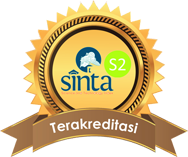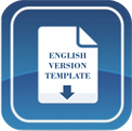Development of Standard Assessment for Understanding Green Chemistry Principles Based on Unity of Science
DOI:
https://doi.org/10.15575/jtk.v9i1.30276Keywords:
green chemistry, rasch model, standard assessment, unity of sciencesAbstract
References
Anastas, P. T., Constable, D. J., & Jiménez-gonzález, C. (2014). Handbook of green chemistry, Green metrics (11th edition). Wiley-VCH.
Ardila-Fierro, K. J., & Hernández, J. G. (2021). Sustainability assessment of mechanochemistry by using the twelve principles of green chemistry. ChemSusChem, 14(10), 2145–2162. https://doi.org/10.1002/cssc.202100478
Aubrecht, K. B., Bourgeois, M., Brush, E. J., MacKellar, J., & Wissinger, J. E. (2019). Integrating green chemistry in the curriculum: Building student skills in systems thinking, safety, and sustainability. Journal of Chemical Education, 96(12), 2872-2880. https://doi.org/10.1021/acs.jchemed.9b00354
Bandur, A. (2019). Penelitian kualitatif (studi multi-disiplin keilmuan dengan Nvivo 12 plus). Mitra Wacana Media.
Bond, T. G., & Fox, C. M. (2019). Applying the Rasch Model. Routledge Taylor & Francis Group.
Boone, W. J. (2016). Rasch analysis for instrument development: why, when, and how. CBE Life Sciences Education, 15(4). https://doi.org/10.1187/cbe.16-04-0148
Boone, W. J., & Noltemeyer, A. (2017). Rasch analysis: A primer for school psychology researchers and practitioners. Cogent Education, 4(1). https://doi.org/10.1080/2331186X.2017.1416898
Boone, W. J., & Scantlebury, K. (2006). The role of Rasch analysis when conducting science education research utilizing multipleâ€choice tests. Science Education, 90(2), 253-269.https://doi.org/10.1002/sce.20106
Burmeister, M., Schmidt-Jacob, S., & Eilks, I. (2013). German chemistry teachers’ understanding of sustainability and education for sustainable development - An interview case study. Chemistry Education Research and Practice, 14(2), 169–176. https://doi.org/10.1039/c2rp20137b
Chamidah, A. N., & Mulyanti, S. (2021). Green chemistry-based reaction rate practice through online media: an analysis of teachers and students. Indonesian Journal of Science and Mathematics Education, 4(2), 134–144. https://doi.org/10.24042/ijsme.v4i1.8452
Chen, M., Jeronen, E., & Wang, A. (2020). What lies behind teaching and learning green chemistry to promote sustainability education? A literature review. In International Journal of Environmental Research and Public Health 17(21), pp. 1–25). https://doi.org/10.3390/ijerph17217876
Cohen, L., Manion, L., & Morrison, K. (2018). Research methods in education 8th edition. Routledge Taylor & Francis Group. http://library1.nida.ac.th/termpaper6/sd/2554/19755.pdf
Cosio, M. N., Cardenal, A. D., Maity, A., Hyun, S.-M., Akwaowo, V. E., Hoffman, C. W., Powers, T. M., & Powers, D. C. (2020). Exploring green chemistry with aerobic hypervalent iodine catalysis. Journal of Chemical Education, 97(10), 3816–3821. https://doi.org/10.1021/acs.jchemed.0c00410
Davidowitz, B., & Potgieter, M. (2016). Use of the Rasch measurement model to explore the relationship between content knowledge and topic-specific pedagogical content knowledge for organic chemistry. International Journal of Science Education, 38(9), 1483–1503. https://doi.org/10.1080/09500693.2016.1196843
Eilks, I. (2015). Science education and education for sustainable development - justifications, models, practices and perspectives. Eurasia Journal of Mathematics, Science and Technology Education, 11(1), 149–158. https://doi.org/10.12973/eurasia.2015.1313a
Eissen, M. (2012). Sustainable production of chemicals-an educational perspective. Chemistry Education Research and Practice, 13(2), 103–111. https://doi.org/10.1039/c2rp90002e
Hawa, N. E., & Mulyanti, S. (2021). Efektifitas penggunaan kembang sepatu sebagai indikator alam untuk identifikasi senyawa asam basa. Walisongo Journal of Chemistry, 4(1), 1–7. https://doi.org/10.21580/wjc.v4i1.6579
Ivanković, A. (2017). Review of 12 principles of green chemistry in practice. International Journal of Sustainable and Green Energy, 6(3), 39. https://doi.org/10.11648/j.ijrse.20170603.12
Laliyo, L. A. R., Tangio, J. S., Sumintono, B., Jahja, M., & Panigoro, C. (2020). Analytic approach of response pattern of diagnostic test items in evaluating students’ conceptual understanding of characteristics of particle of matter. Journal of Baltic Science Education, 19(5), 824–841. https://doi.org/10.33225/jbse/20.19.824
Lee, N. E., Gurney, R., & Soltzberg, L. (2014). Using green chemistry principles as a framework to incorporate research into the organic laboratory curriculum. Journal of Chemical Education, 91(7), 1001–1008. https://doi.org/10.1021/ed300283y
Linacre, J. M. (2002). Understanding rasch measurement: optimizing rating scale category effectiveness. Journal of Applied Measurement, 3(1), 85–106. Retrieved from https://www.researchgate.net/profile/John-Linacre/publication/11372384_Understanding_Rasch_measurement_Optimizing_rating_scale_category_effectiveness/links/65548bccb1398a779d8f59be/Understanding-Rasch-measurement-Optimizing-rating-scale-category-effectiveness.pdf
Mannan, A. (2018). Transformasi nilai-nilai tauhid dalam perkembangan sains dan teknologi. Jurnal Ilmu Aqidah, 4(2), 252-268. https://doi.org/10.24252/aqidahta.v4i2.7574
Mohammed, W., & Errayes, A. (2020). Green chemistry: principles, applications, and disadvantages. Chemical Methodologies, 4(4), 408–423. https://doi.org/10.33945/sami/chemm.2020.4.4
Mulyanti, S., Mardhiya, J., & Solihah, M. (2022). Perspectives on green chemistry and the application of Nvivo 12 software: a case study of pandemic period in chemistry education. Scientiae Educatia: Jurnal Pendidikan Sains, 11(1), 49–55. https://www.syekhnurjati.ac.id/jurnal/index.php/sceducatia/article/view/10280
Mustopo, A. (2017). Integrasi agama dan ilmu pengetahuan. Al-Afkar, 5(2), 81–110. https://doi.org/10.32520/al-afkar.v5i2.176
Netemeyer, richard G., Bearden, W. O., & Sharma, S. (2003). Scalling Procedures Issue and Aplication (Vol. 7, Issue 1). Sage Publications.
Rasyid, S., Nurdin, D., Suryana, A., Samsudin, A., & Aminudin, A. H. (2022). Can the tahfidzul-qur’an education system (T-QES) create leadership with integrity? NVivo 12 analysis. Cypriot Journal of Educational Sciences, 17(6), 1925–1942. https://doi.org/10.18844/cjes.v17i6.7485
Sarjuni. (2018). Konsep ilmu dalam islam dan implikasinya dalam praktik kependidikan. Studi dan Penelitian Pendidikan Islam, 1(2), 47–57. http://dx.doi.org/10.30659/jspi.v1i2.3208
Silvestri, C., Silvestri, L., Forcina, A., Di Bona, G., & Falcone, D. (2021). Green chemistry contribution towards more equitable global sustainability and greater circular economy: a systematic literature review. Journal of Cleaner Production, 294, 126137. https://doi.org/10.1016/j.jclepro.2021.126137
Sinakou, E., Donche, V., Pauw, J. B. De, & Van Petegem, P. (2019). Designing powerful learning environments in education for sustainable development: A conceptual framework. Sustainability (Switzerland), 11(21), 1–23. https://doi.org/10.3390/su11215994
Wahyuningsih, A. S., & Rohmah, J. (2020). Penerapan prinsip green chemistry dalam pengembangan modul praktikum untuk mata kuliah larutan. Prosiding Seminar Nasional Pendidikan, 1(11). Retrieved from http://eprints.umsida.ac.id/424/1/1.%20ARTIKEL%20Arini%20Siti%20Wahyuningsih.pdf
Wallen, S. L., Dhau, J., Green, R., Wemple, L. B., Kelly, T., & Collins, B. (2020). Maker chemistry: exploring redox reactions in introductory laboratory through light-emitting diode printed circuit board fabrication. Journal of Chemical Education, 97(2), 490–496. https://doi.org/10.1021/acs.jchemed.8b01061
Widayanti, Y., & Mulyanti, S. (2021). Response to video experiments on identification of electrolyte and non-electrolyte solutions with easy , cheap , and environmentally friendly methods , tools , and materials through online media. Jurnal Pendidikan dan Pembelajaran Kimia, 10(2), 135–145. https://doi.org/10.23960/jppk.v10.i2.2021.11
Zain, Z., & Vebrianto, R. (2017). Integrasi keilmuan sains dan islam dalam proses pembelajaran rumpun IPA. Jurnal Program Studi Pendidikan Kimia, 18–19. Retrieved from https://ejournal.uin-suska.ac.id/index.php/SNTIKI/article/view/3198
Zuin, V. G., Eilks, I., Elschami, M., & Kümmerer, K. (2021). Education in green chemistry and in sustainable chemistry: perspectives towards sustainability. Green Chemistry, 23(4), 1594–1608. https://doi.org/10.1039/d0gc03313h
Downloads
Published
How to Cite
Issue
Section
Citation Check
License
Authors who publish with this journal agree to the following terms:
- Authors retain copyright and grant the journal right of first publication with the work simultaneously licensed under a Creative Commons Attribution-ShareAlike that allows others to share the work with an acknowledgement of the work's authorship and initial publication in this journal.
- Authors are able to enter into separate, additional contractual arrangements for the non-exclusive distribution of the journal's published version of the work (e.g., post it to an institutional repository or publish it in a book), with an acknowledgement of its initial publication in this journal.
- Authors are permitted and encouraged to post their work online (e.g., in institutional repositories or on their website) prior to and during the submission process, as it can lead to productive exchanges, as well as earlier and greater citation of published work (See The Effect of Open Access).








